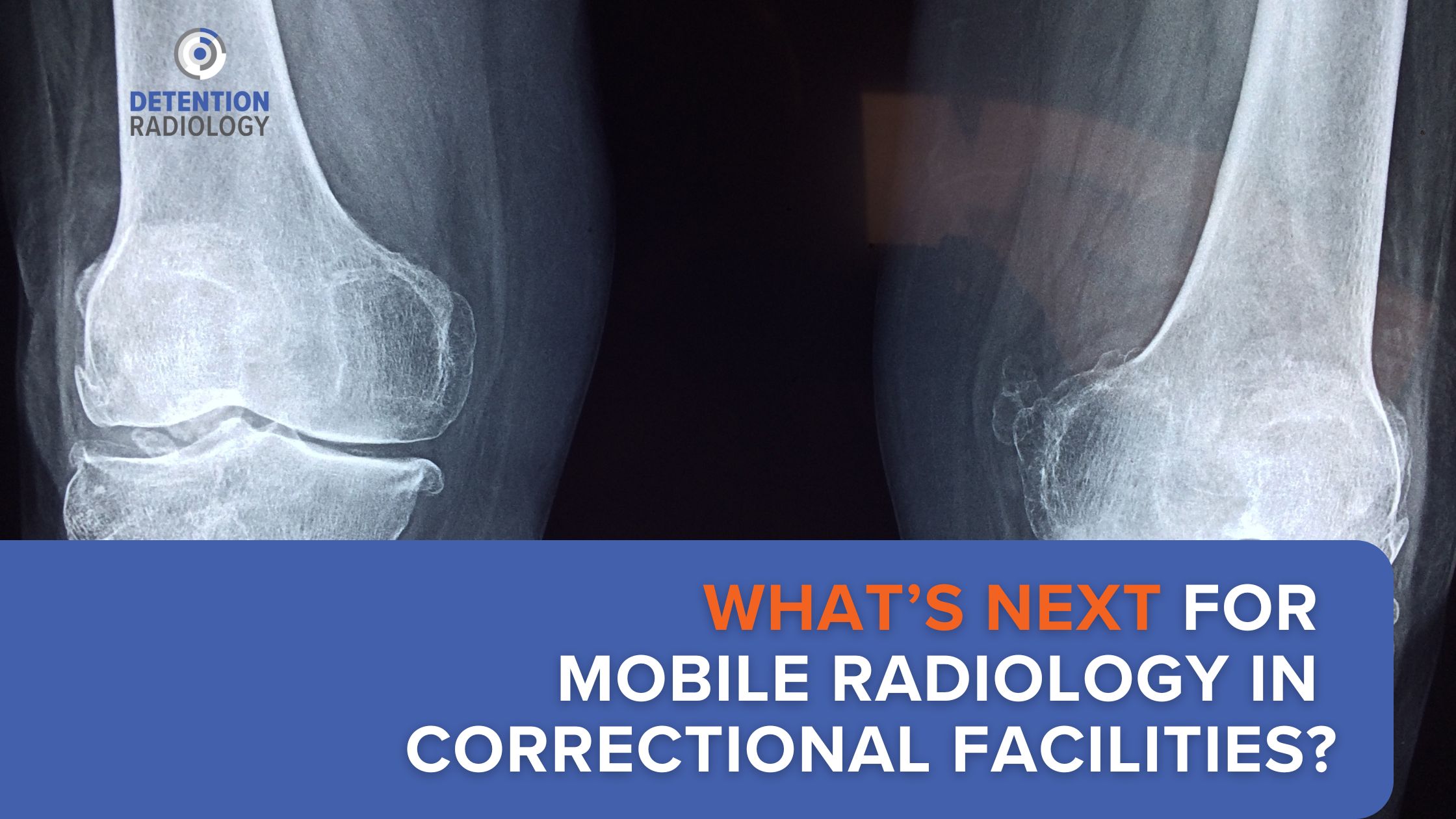The Future of Correctional Mobile Radiology: What’s Next for Mobile Radiology in Correctional Facilities?
Incarcerated individuals often have complex, unmet medical needs—and correctional healthcare providers are under increasing pressure to deliver high-quality care quickly, securely, and within facility walls. For years, on-site imaging has played a critical role in making that possible. But what comes next.
This article explores the future of correctional mobile radiology, focusing on the trends, innovations, and predictions shaping how detention centers handle diagnostic imaging in the years ahead.
“On-site imaging is no longer a luxury—it’s a necessity,” says Tyler Merchant, Director of Detention Radiology. “And the future is about making it smarter, faster, and more integrated into everyday correctional care.”
Where We Are Now: A Snapshot of On-Site Imaging in Corrections
On-site radiology has already transformed how correctional facilities manage healthcare. By bringing X-ray technology directly to the facility, providers avoid the risks and costs of inmate transport while improving compliance with diagnostic timelines.
Services like those offered by Detention Radiology deliver:
- Same-day imaging response times
- Seamless EMR integration
- Full compliance with HIPAA, DOJ, and NCCHC standards
- X-rays, ultrasounds, echocardiograms, and more—all performed securely on-site
But as needs evolve and technology advances, the mobile imaging model is expanding to do more, better.
Trend 1: Smart Integration with EMR and EHR Platforms
Correctional healthcare teams often struggle with fragmented documentation. That’s why the next wave of mobile radiology is focused on real-time integration with electronic health records.
Future enhancements will include:
- Automated report uploads into facility EMRs
- AI-assisted diagnostics for rapid reads
- Integrated imaging orders and alerts tied to intake screenings and sick calls
Why It Matters
Audits and accreditation hinge on documented proof of timely care. The importance of timely diagnostics isn’t just about better outcomes—it’s about reducing liability and staying compliant. The future of mobile radiology ensures that proof is built into your system.
Trend 2: Advanced Imaging Capabilities in Smaller Footprints
Expect to see the rise of compact, high-resolution portable imaging devices. These next-gen tools will expand the capabilities of on-site services to include:
- Digital radiography (DR): Higher image quality and faster processing
- AI-powered image enhancements: Clearer diagnostics without retakes
- Wireless data transfer: More secure, efficient uploads
The key? Smaller machines with greater power, mobility, and speed.
Trend 3: Predictive Imaging Based on Health Risk Triggers
As correctional health data becomes more sophisticated, on-site imaging will increasingly be used proactively, not just reactively.
What’s coming:
- Health algorithms that flag high-risk inmates during intake
- Scheduled follow-ups based on chronic condition data
- Custom screening protocols (e.g., TB, cardiac, musculoskeletal) aligned with facility population needs
“We’re working toward a model where imaging is an expected part of routine care—not just for emergencies,” Tyler Merchant explains. “This proactive approach will help facilities identify issues before they escalate.”
Trend 4: Broader Imaging Access Across Diverse Facility Types
Mobile radiology is expanding its reach—not just in jails and prisons, but in halfway houses, juvenile facilities, and psychiatric units. The future of correctional radiology includes:
- Versatile equipment adaptable to small or non-traditional medical spaces
- Tiered service models for smaller counties or multi-site jurisdictions
- Increased focus on health equity and access for underserved inmate populations
This expansion will make high-quality diagnostics more accessible, no matter the facility size or location.
Trend 5: Enhanced Support for Facility Compliance and Staff Efficiency
Imaging providers are now expected to do more than deliver scans—they must support compliance, documentation, and operational efficiency.
In the future, mobile imaging services will include:
- Audit-prepared reporting formats
- Automated alerts for follow-up scans
- Ongoing staff education on imaging protocols and procedures
These add-ons position on-site imaging not just as a service—but as a strategic compliance tool.
What This Means for Correctional Facilities
As healthcare delivery in corrections becomes more sophisticated, the demand for advanced, dependable diagnostic solutions will only grow. Facilities that partner with forward-thinking providers like Detention Radiology will be better equipped to:
- Reduce diagnostic delays
- Improve continuity of care
- Avoid unnecessary hospital trips
- Pass audits and maintain accreditation
- Enhance inmate health outcomes—safely and securely
“We’re not just showing up with an X-ray machine,” says Merchant. “We’re helping facilities create safer, more efficient systems of care.”
Your Next Step Toward a Smarter Imaging Future
Whether you’re planning for upcoming audits or looking to reduce reliance on off-site transport, the future of correctional mobile radiology is here—and Detention Radiology is ready to help you lead it.
📍 Start planning your facility’s imaging strategy today: https://detentionradiology.com/services/






